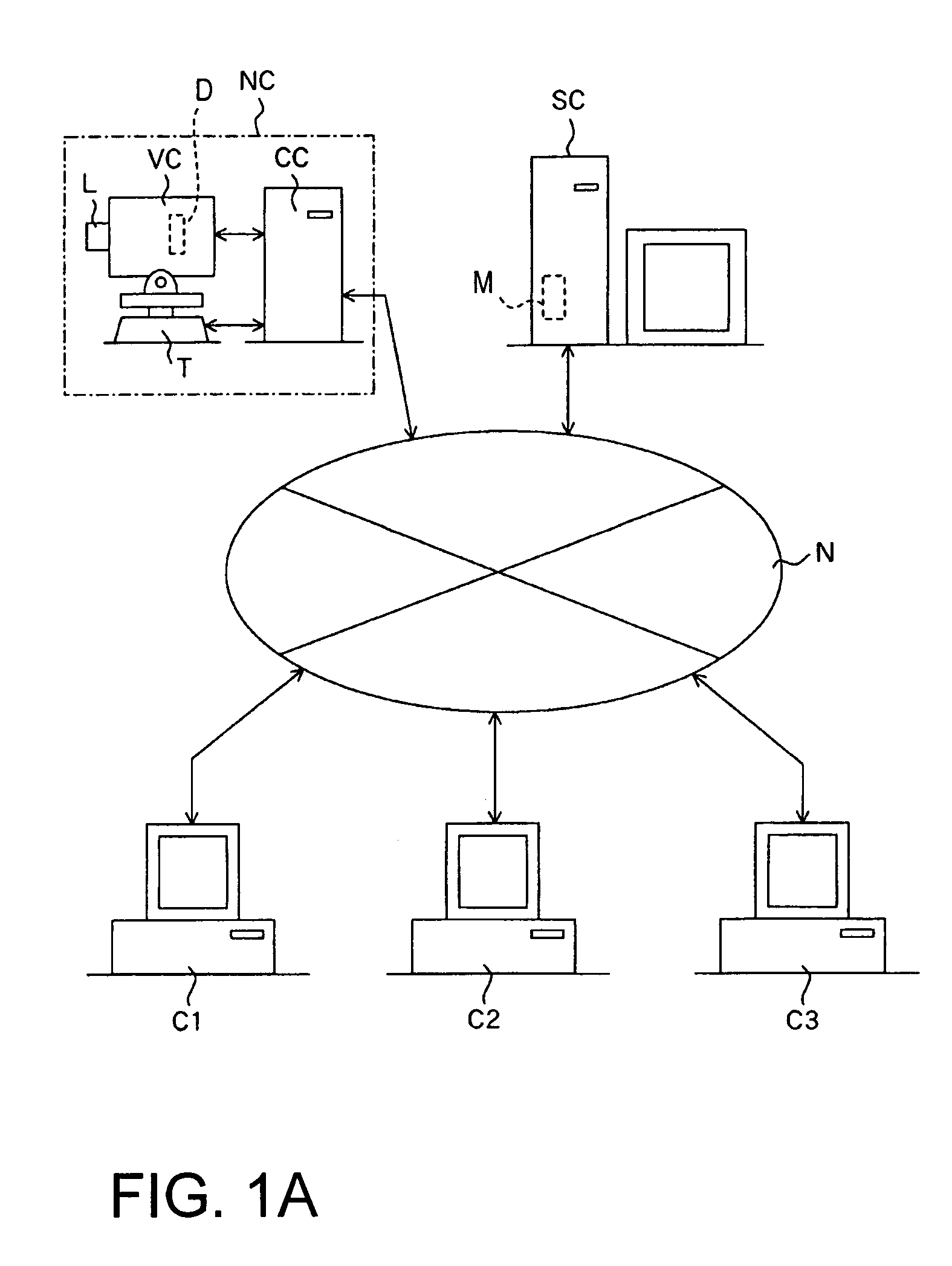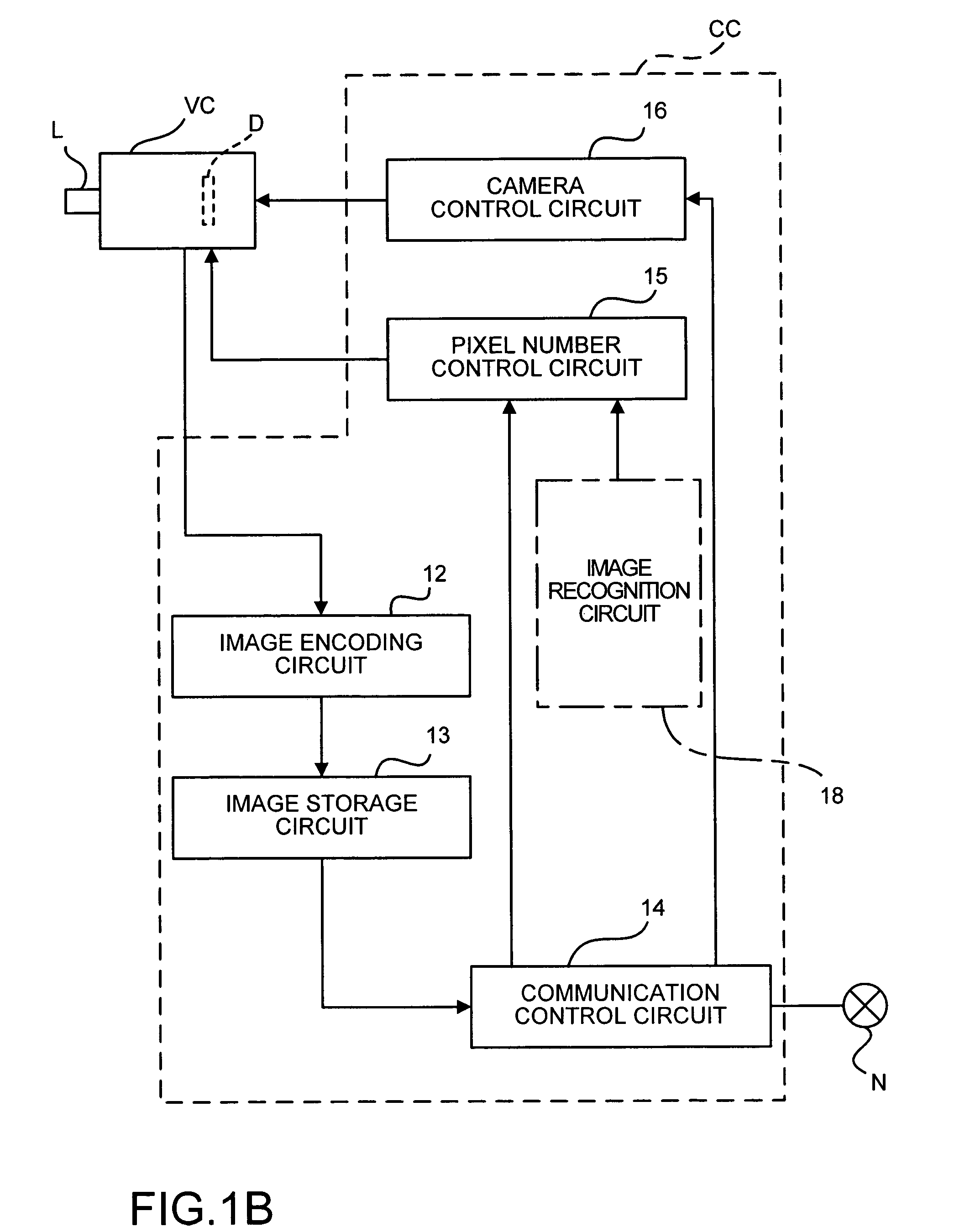Image-taking apparatus capable of distributing taken images over network
- Summary
- Abstract
- Description
- Claims
- Application Information
AI Technical Summary
Benefits of technology
Problems solved by technology
Method used
Image
Examples
embodiment 1
[0036]FIG. 1A schematically illustrates the structure of a network image-taking system using a network camera (image-taking apparatus) according to Embodiment 1. N denotes a network such as a LAN, a WAN, the Internet, or an Ethernet network. It should be noted that this network N is not necessarily a wired network, but may also be a wireless network. VC denotes a video camera which can take moving images and still images.
[0037]The video camera VC is mounted on a pan head T in a busy street or a tourism spot or the like. Panning and tilting is possible by operating the pan head T and zooming is possible by operating an image-taking lens L.
[0038]This video camera VC takes images by photoelectrically converting with an image-pickup device (photoelectric conversion device) D, such as a CCD or CMOS sensor, object images formed with a zoomable image-taking lens (image-taking optical system) L. Moreover, the video camera VC can take the object image in either a first image-taking mode for ...
embodiment 2
[0062]In Embodiment 1, a case has been explained in which it is decided, based on the focal length (image-taking zoom ratio) of the image-taking lens L or the object distance, whether high-resolution image-taking is prohibited or not, but it is also possible to decide whether high-resolution image-taking is prohibited or not, depending on whether the object to be pictured is a specific object, such as a person (in particular, a face).
[0063]In that case, an image recognition circuit 18 is provided inside the control computer CC, as shown by a dotted line in FIG. 1B, and it is determined whether there is a specific object in the image-taking field. It should be noted that the image recognition circuit 18 also may be provided outside the control computer CC.
[0064]More specifically, for the image recognition circuit 18, a circuit may be used that can discriminate shapes of objects by edge detection in the image taken at low resolution in the first image-taking mode. When this image reco...
embodiment 3
[0078]In Embodiments 1 and 2, cases have been explained in which image-taking at high resolutions is prohibited in accordance with the result of detecting the focal length of the image-taking lens L or the result of determining the object with an image recognition circuit. This embodiment explains the case that the administrator of the network camera NC can freely set a region at which high-resolution image-taking is prohibited.
[0079]FIG. 6 is a flowchart showing the operation of the network camera NC of Embodiment 3 (mainly the pixel number control circuit 15). It should be noted that the overall structure of the network image-taking system is similar to that of Embodiment 1.
[0080]First, at Step 61, the administrator enters into the control computer CC, via the server computer SC, an administrator password for setting or changing an image-taking restriction condition of the network camera NC in the control computer CC, and if the verification of this password is successful, then th...
PUM
 Login to View More
Login to View More Abstract
Description
Claims
Application Information
 Login to View More
Login to View More - R&D
- Intellectual Property
- Life Sciences
- Materials
- Tech Scout
- Unparalleled Data Quality
- Higher Quality Content
- 60% Fewer Hallucinations
Browse by: Latest US Patents, China's latest patents, Technical Efficacy Thesaurus, Application Domain, Technology Topic, Popular Technical Reports.
© 2025 PatSnap. All rights reserved.Legal|Privacy policy|Modern Slavery Act Transparency Statement|Sitemap|About US| Contact US: help@patsnap.com



